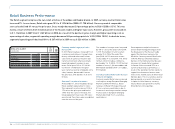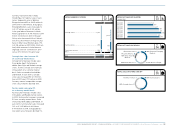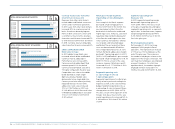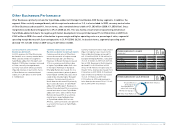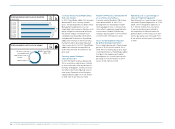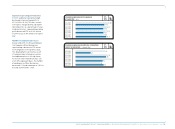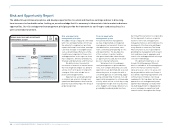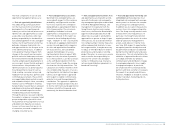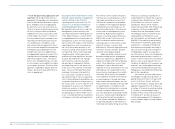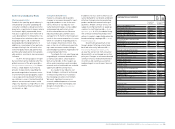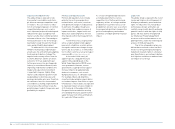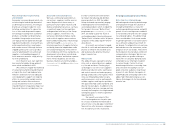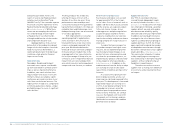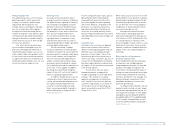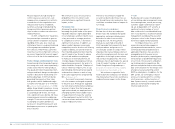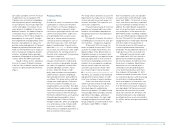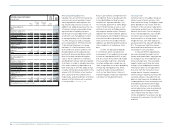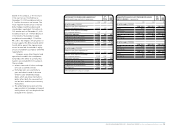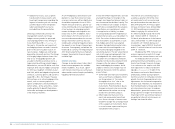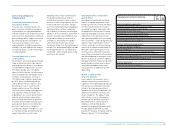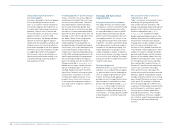Reebok 2009 Annual Report Download - page 148
Download and view the complete annual report
Please find page 148 of the 2009 Reebok annual report below. You can navigate through the pages in the report by either clicking on the pages listed below, or by using the keyword search tool below to find specific information within the annual report.
144 GROUP MANAGEMENT REPORT – FINANCIAL REVIEW Risk and Opportunity Report
Industry consolidation risks
The adidas Group is exposed to risks
from market consolidation and strate-
gic alliances amongst competitors and/
or retailers. This can result in a reduc-
tion of our bargaining power, or harmful
competitive behaviour such as price
wars. Abnormal product discounting and
reduced shelf space availability from
retailers are the most common potential
outcomes of these risks. Sustained pro-
motional pressure in one of the Group’s
key markets could threaten the Group’s
sales and profitability development.
To moderate this risk, we are com-
mitted to maintaining a regionally bal-
anced sales mix and continually adapting
the Group’s distribution strategy. The
negative real economy effects from the
economic downturn and the uncertain
outlook for 2010 are expected to put
further pressure on the sporting goods
industry to consolidate. Moreover, with
improving credit market conditions the
merger and acquisition environment
is expected to improve slightly. Many
retailers and competitor positions have
weakened due to declining sales and
earnings during the prior year. Therefore,
we continue to see risks from market
consolidation as having a high likelihood
of occurrence. We continue to view the
potential impact on both Group sales and
profitability as medium.
Political and regulatory risks
Political and regulatory risks include
potential losses from expropriation,
nationalisation, civil unrest, terrorism
and significant changes to trade policies.
In particular, the adidas Group faces
risks arising from sudden increases of
import restrictions, import tariffs and
duties that could compromise the free
flow of goods within the Group and from
suppliers.
To limit these risks, we proactively
utilise a regionally diversified supplier
base which establishes a certain protec-
tion against unforeseen changes in regu-
lations and also allows us to shift produc-
tion to other countries at an early stage if
necessary see Global Operations, p. 88.
At the end of 2008, nearly all
apparel-specific safeguard measures
against China expired based on the
World Trade Organization (WTO) acces-
sion agreements. However, various
governments sought protection against
footwear imports by applying trade
defence instruments, such as anti-
dumping measures, on a broader scale.
For example, Brazil and Argentina
recently introduced higher import duties
on footwear imports from China on a pre-
liminary basis. These duties are expected
to negatively impact our gross margin in
2010. Similarly, in December 2009, the
European Union extended the existing
anti-dumping measures against leather-
upper footwear from China and Vietnam
for a period of fifteen months.
As a result of heightened protectionist
activity by governments, we now
regard the risk of further political and
regulatory actions as having a medium
probability of occurrence versus a low
probability in our prior year assessment.
An unexpected significant change in the
political and regulatory environment
could have a medium potential financial
impact.
Legal risks
The adidas Group is exposed to the risk of
claims and litigation for infringement of
third-party trademark, patent and other
rights. To reduce this risk, new product
technologies, designs and names are
carefully researched to identify and avoid
potential conflicts with the rights of third
parties. We have further strengthened
our Intellectual Property department
resources to drive enhancements in our
patent portfolio, and in the reviewing and
analysis of third-party patents.
Due to the safeguards in place, we
believe there continues to be a low likeli-
hood of our Group infringing third-party
trademark or patent rights in a material
way. Nevertheless, we continue to believe
that litigation could have a medium finan-
cial impact on our Group.


